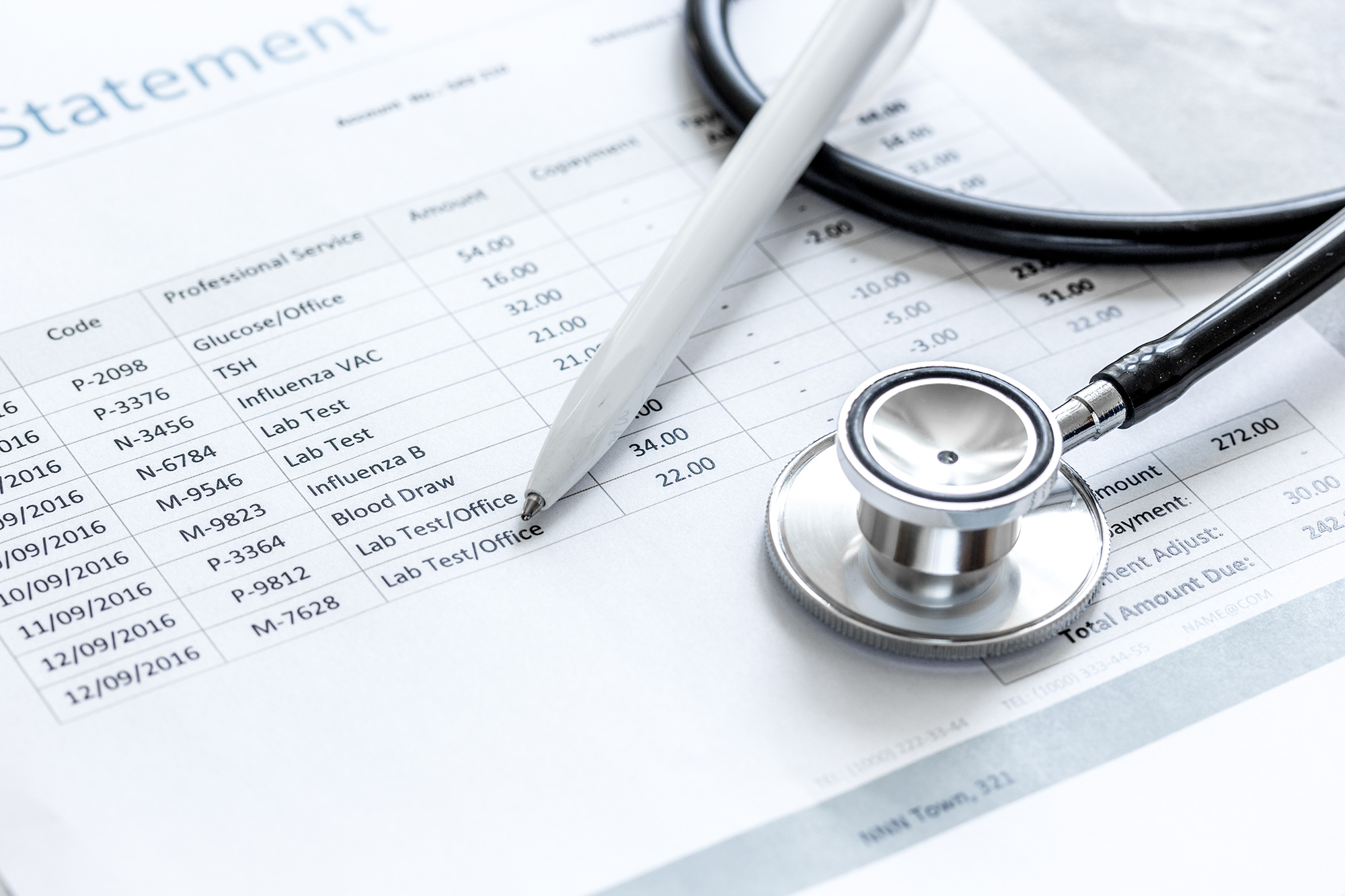Becoming a doctor is a significant commitment, both in terms of time, energy, and money. You didn’t make the decision to go to medical school lightly, so why should you make decisions about your student loans the same way? According to the Association of Faculties of Medicine in Canada (AFMC), the average student loan debt for doctoral degrees is $100,000, with 13.6% of students graduating with over $200,000 of student loan debt. While it seems like a large number, there are plenty of loan forgiveness programs for doctors in place to help new physicians repay this amount over the course of their career. Whether you’re just starting out on your medical career or you’re still considering your options, here are some key things to remember when you estimate your average student loan debt.
1. Calculate your tuition fees
Tuition fees make up the majority of loans for doctors. These will depend on the school that you choose – are you going out of province or staying close to home? Are you planning on finishing your studies after your MD, or going further to obtain a specialization? All of these factors will impact the amount you will pay. According to the AFMC, the average tuition for medical programs in Canada is $16,798 per year, and this can vary considerably between provinces. Ontario has the highest provincial average of $27,304, with Quebec as the lowest. If you’re planning on financing your full four years of medical school, you could end up spending between $70-120k on tuition alone – you will also need to consider things like professional dues, student fees, your living expenses and your overall wealth management.
2. Calculate the amount you need as living expenses
Medical school is a long-term commitment – you’ll need to budget for food and rent as well as your tuition. Where will you live? How much will you spend on food and other necessities? Making great financial decisions during school will make the average student loan debt for doctoral degrees significantly lower, and this starts with some planning. The Association of American Medical colleges recommends medical students set up a budget with their fixed expenses – like rent, utilities, or a car payment – and variable expenses – like food, groceries, and clothing, and budget within these amounts.
As you set out your budget, it’s important to be realistic – if you’re expecting around the clock work and study hours, it might not be feasible to prepare all your meals at home or stay with lots of noisy roommates. Despite the high cost of attending school, your education should be your first priority. Setting out a budget ahead of time can help you set up which areas you’d like to spend, and which areas you’re okay with saving. While you don’t want to overspend your budget in school and drain your income once you’ve graduated, you also don’t want to leave yourself with so little that you can’t do your best while you study.
3. Apply for scholarships and bursaries
Now that you’ve calculated how much you need, it’s a good idea to apply for any scholarships, bursaries, and grants available to finance your medical education. The Canadian Medical Foundation provides scholarships and bursaries to medical students, and there are government grants available to help offset the cost of your medical studies. Even though these options might only cover a small portion of your medical student debt, every little bit helps, and it’s a good idea to avoid spending more than you need to.
4. Find the right lender
Once you’ve come up with the amount you need, it’s time to consider the options available to you to cover your bill. Finding the right lender to help finance your medical school education will depend on several factors – how much have you saved towards your medical school education? How much do you still need to repay from your existing student loans? Most loans for doctors come in two forms – professional student lines of credit from major banks, or government student loans. Depending on the amount you will need to finance, it’s a good idea to consider both.
With good credit, most of the major lenders will finance loans for physicians with no collateral and no guarantor – the years of education and your future earning potential act as protection on loans for doctors, since your lenders have reasonable assurance that you will be able to repay. While there can be many loan options for doctors, loans typically come in the form of lines of credit, which are flexible options for students to borrow only what they need. They usually bear interest at or around the prime rate and can be extended through your residency period. Some lenders offer flexible interest and principal repayment programs on loans for physicians that allow doctors to repay after their residency has been completed. While many require at least an interest payment each month, the grace period before making principal payments is usually longer than government student loans, stretching as far as two years after your residency period.
If you have the resources available, you could also consider private loans from friends or family members. Remember to set up the terms of your loan and your repayment schedule beforehand so both parties know what they’re getting into, and regardless of the level of support you have from your family or friends, it’s also a good idea to apply for government student loans.
Government student loans should be your first option for financing your medical education, as these are the loans that will qualify you for loan forgiveness programs for doctors, tax benefits, and reduced repayment schedules during your residency. These loans bear interest at the prime rate, which is usually low, and begin repayment six months after the completion of your studies, unless you qualify for the loan forgiveness or resident relief programs described below.
5. Apply for loan forgiveness programs
Once you’ve completed your medical degree, it’s time to start repayment – but don’t worry. Physicians have plenty of loan forgiveness options to help them out.
-
The Canada Student Loan forgiveness program for family doctors and nurses is a program that provides loan forgiveness for doctors who work in under-
served or remote communities. Doctors who are willing to spend a year in an under-served or remote community are eligible for $8000 per year in loan forgiveness. Similar programs exist provincially in British Columbia and Saskatchewan and forgive a portion of your total student loan debt for working in a remote area, with the full amount of your loan forgiven within five years. -
The Resident Loan Interest Relief Program exists in Ontario to support physicians during their residency. Physicians are not required to pay interest or principal on their government student loans for the duration of their residency, provided they remain in Ontario to provide physician services for five years after medical school. A similar program exists in PEI. Residents in other provinces can take advantage of the repayment assistance plans offered by their provincial student loan providers.
-
RBC’s Healthcare Advantage has a special program for physicians, at different phases of their career. They can give you support and advice in banking and beyond, to help you succeed when it comes to your finances.
6. Keep track of your taxes
In addition to the government sponsored loan forgiveness programs for doctors, the next way you can claim back some of what you paid in student loans is on your taxes. This is done in a few ways:
-
The tuition you paid each year will be translated into federal and provincial tax credits that can then be used to offset your tax bill when you are working; if you are married, a portion of the tuition you pay each year can be transferred to your spouse for their tax refund, and any unused tax credits can be paid forward until they can be used.
-
You can claim a tax credit on the interest you pay on your government student loans; this is calculated on up to 15% of the interest paid. This amount can be carried forward on your taxes for the next five years.
-
Any scholarship or bursary income you receive can then be excluded from your employment income – it’s important that you keep your employment income in the years before you graduate as low as possible, as your tuition credits will make up a significant portion of your loan forgiveness from the government.
-
Union or professional dues to your medical college are tax deductible and can reduce the taxes you pay.
-
If you’re moving to take part in a remote-work program for loan forgiveness, your moving expenses will be tax deductible
Finally, you might want to get creative and think out of the box – thanks to your student loan debt, you will likely be receiving a large tax refund the first few years of practice. This tax refund can then be invested back into paying down your student loan debt, creating an RRSP or a TFSA, or in making investments for retirement. For more on planning for tax season take a look at our tax Planning Q&A for Canadian Physicians. Whichever you choose, the amount you spend on medical school is a worthwhile investment in your financial future.
This article offers general information only and is not intended as legal, financial or other professional advice. A professional advisor should be consulted regarding your specific situation. While information presented is believed to be factual and current, its accuracy is not guaranteed and it should not be regarded as a complete analysis of the subjects discussed. All expressions of opinion reflect the judgment of the author(s) as of the date of publication and are subject to change. No endorsement of any third parties or their advice, opinions, information, products or services is expressly given or implied by RBC Ventures Inc. or its affiliates.








